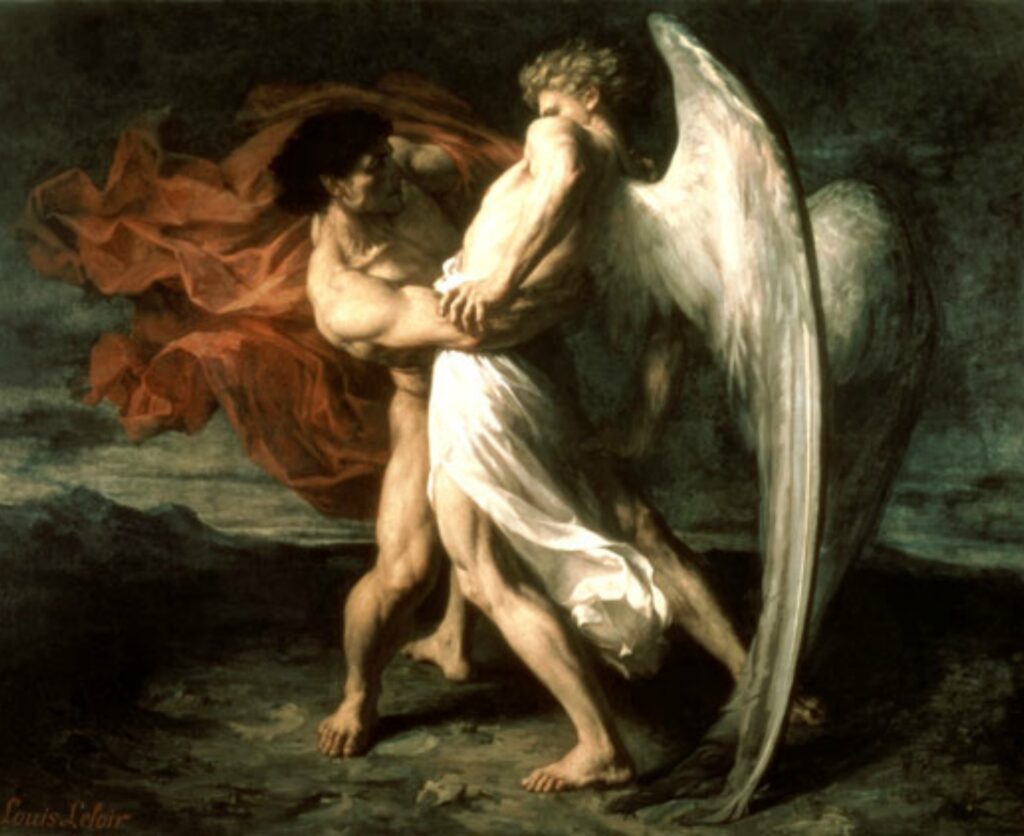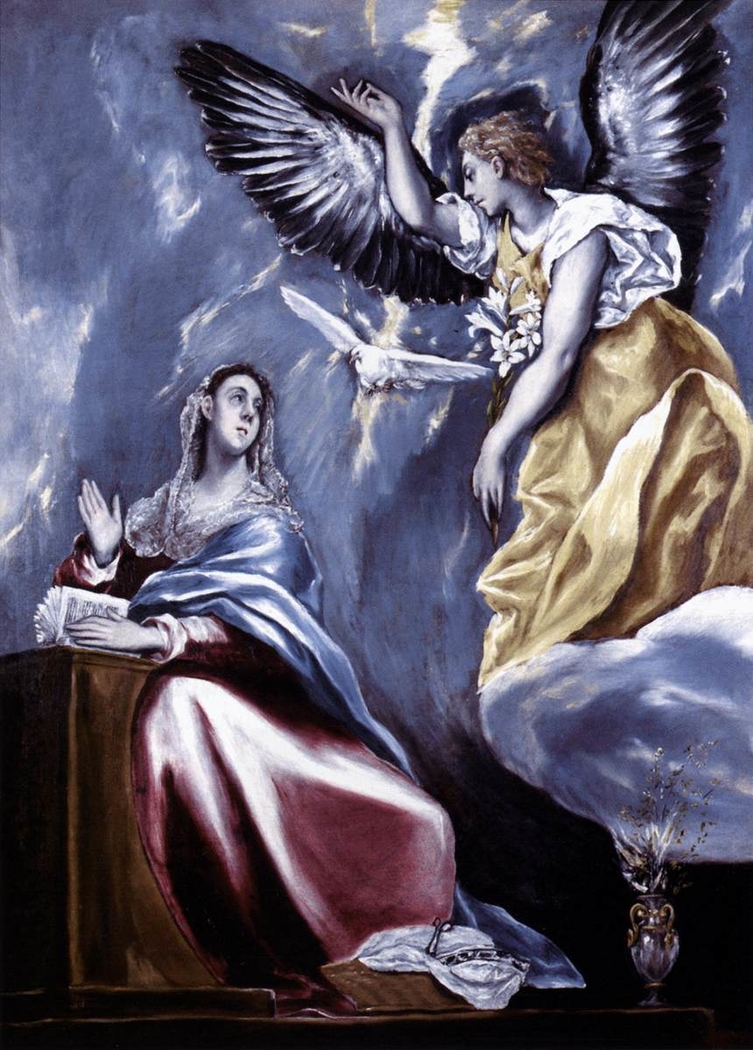* * * *

* * * *
Ascension Day always comes on a Thursday, 40 days after Easter. (In 2024, that was on May 9.) It’s a major Feast Day – ranking right up there with Easter and Pentecost – and commemorates the bodily Ascension of Jesus into heaven. The Gospel reading for the day is Luke 24:44-53:
Jesus said to his disciples, “These are my words that I spoke to you while I was still with you… Then he opened their minds to understand the scriptures, and he said to them, “Thus it is written, that the Messiah is to suffer and to rise from the dead on the third day…” Then he led them out as far as Bethany, and, lifting up his hands, he blessed them. While he was blessing them, he withdrew from them and was carried up into heaven…
Note the words that Jesus “opened their minds to understand the scriptures,” followed by the words saying that the disciples “returned to Jerusalem with great joy.” That’s Good News!
(“Good news” being the Old English translation of the Greek word for Gospel…)
And speaking of the great joy that can come when you let Jesus open up your mind… (As in, “the Bible was designed to expand your mind.”) In my 2014 post on the day I noted some people have a problem with such Bible miracles in general. That includes the Ascension, but it also includes the whole idea that there is “life after life.” I too had a big problem with that idea – “Is there really life after death?” – after a grueling event years ago. My nephew was riding in a car, the car plunged into the Chattahoochee River north of Atlanta, and he was trapped inside.
That tragic death shook my faith, it made me wonder. The usual platitudes offered no comfort at all, but eventually I did find some comfort in the First law of thermodynamics. That law of physics says that “energy can be transformed from one form to another, but cannot be created or destroyed.” Put another way, energy is neither created nor destroyed, but simply changes form. So I figured that if the human soul is a form of energy – which seems self-evident – then it stands to reason that it is neither created nor destroyed, but simply “changes form.”
Which brings up another question, “Where was my soul before I was born?” (As in Jeremiah 1:5, where God said to the prophet, “Before I formed you in the womb I knew you.”) That’s one of those Rabbit Trails I love exploring, but they are said to detract from that Unity & Coherence rule that writers are supposed to follow. So, back to the Ascension of Jesus…
I found two good articles on the subject, Why Does the Ascension of Jesus Matter? – BibleProject, and The Ascension of Jesus – What was the Meaning and Significance? But then there’s the Wikipedia article, Ascension of Jesus. It refers to the Apostle’s Creed, which says in part that Jesus “ascended into heaven, and is seated at the right hand of God the Father almighty.” This idea “provided an interpretative frame for Jesus’ followers to make sense of his death and the resurrection appearances.” Or as theologian Justus Knecht wrote:
Our Lord went up Body and Soul into heaven in the sight of His apostles, by His own power, to take possession of His glory, and to be our Advocate and Mediator in heaven with the Father. He ascended as Man, as Head of the redeemed, and has prepared a dwelling in heaven for all those who follow in His steps.
In other words, if Jesus hadn’t “ascended to Heaven,” we wouldn’t have a place to stay when we get there. (By faith, expressed in Romans 10:9, “If you declare with your mouth, ‘Jesus is Lord,’ and believe in your heart that God raised him from the dead, you will be saved.” Period.)
And speaking of ascensions, the Daily Office for the Eve of Ascension includes Second Kings, 2:1-15. That tells the story of Elijah being “taken up” in a chariot of fire. He was traveling with Elisha, and knew he was about to be taken up. Elisha asked that Elijah grant him a “double portion of your spirit.” Meaning how Elijah got taken up may have been for Elisha’s benefit:
In taking Elijah to heaven, God foreshadowed Christ’s ascension Perhaps those who saw Jesus taken up from the Mount of Olives and hidden in a cloud would have been reminded of Elijah’s departure (Acts 1:6–9). Those disciples who witnessed Jesus’ ascension served God with dedication the rest of their lives, just as Elisha did.
Which is another way of saying that Jesus wasn’t “taken up” on Ascension Day for His benefit. Instead it happened before witnesses so they could share the story. Because of their testimony, we – over two thousand years later – can benefit from it in such a way as to “expand our mind from the Bible as designed.” (Instead of trying to shape God in our image rather than the other way around, thus turning Genesis 1:17 on its head.) Happy Ascension Day!
* * * *

* * * *
The upper image is courtesy of “elijah taken up in a chariot of fire – images.” This image came with a page on “Pieter Symonsz. Potter.” See also Wikipedia, on the prophet Elijah, and on “Pieter Symonsz Potter” (1597-1652), a Dutch Golden Age painter.
The Book of Common Prayer reference: The “corporate-mystical” prayer is on page 339, the post-communion prayer for Holy Eucharist, Rite I.
“Feast days” are designated days on the liturgical (church) calendar “set aside to commemorate events, saints, or doctrines that are important in the life of the Church. These can range from Solemnities, which are the highest-ranking feast days like Easter and Christmas, to optional memorials that celebrate lesser-known saints.” Feast Days: Celebrating the Church’s Calendar.
“’Good news’ being the Old English…” Per Wikipedia.
Re: “The Bible was designed to expand your mind.” (To the tune of, “If it does not fit, you must acquit.”) For a more serious note, see These Zen Buddhist Koans Will Open Your Mind – HuffPost. Also John 10:16, where Jesus said, “I have other sheep that are not of this fold. I must bring them also.”
For this post I borrowed On Ascension Day, from 2014, Ascension Day 2017 – “Then He opened their minds,” and from 2023, “Her spirit returned” – and Ascension Day. The 2023 post talked about Jesus raising the daughter of Jairus from the dead, set out in Mark 5:21-43, Matthew 9:18-26, and Luke 8:40–56. In Luke 8:54-55, Jesus took the daughter by the hand, told her to get up, “and her spirit returned.” But returned from where? Where had it been?
And a note on Genesis 1:27, “God created mankind in his own image, in the image of God he created them; male and female he created them.” Which leads me to see God not as an Old Man with a Long Flowing Beard, but rather as “the Ultimate Married Couple.” Which could explain why men and women spend so much effort trying to “get together.” (You know, that and the hormones…)
The lower image is courtesy of the Wikipedia article, Ascension of Jesus.
* * * *

















